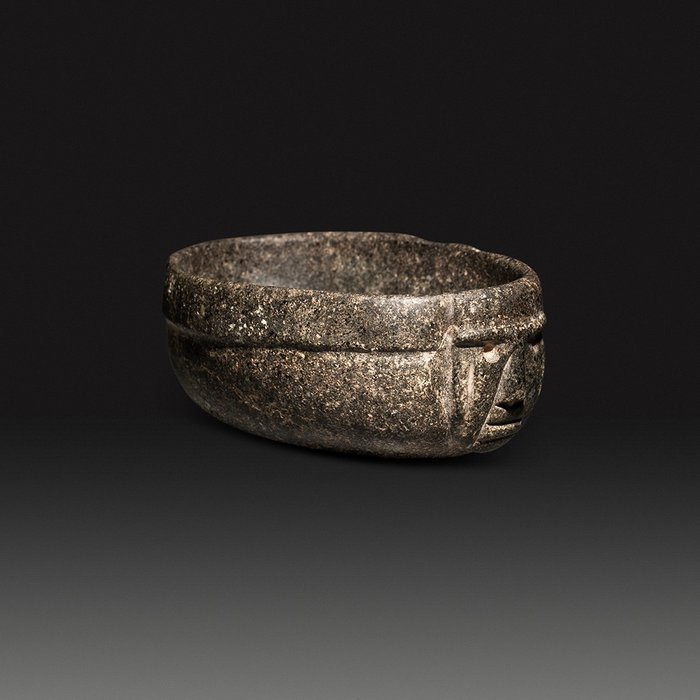
Neolithisch Steen Speerpunt. ca. 1000 voor Christus. 18,5 cm H.
Nr. 83275543

Nr. 83275543

Janus Vessel, with two faces.
CULTURE: Mezcala, Estado de Guerrero, Mexico
PERIOD: 200 BC - 500 AD
MATERIAL: Stone
SIZE: Lenght 13.2 cm.
PROVENANCE:
- Owned by John H. Boehme, Victoria, British Columbia, Canada by inheritance, 2018.
- John L. Boehme Collection, Victoria, British Columbia, Canada acquired from the ex-wives of Dr. Charles Muses (Christine de Montet and Jacqueline Muses Muller), 2006.
- Owned by Christine de Montet and Jacqueline Muses Muller by inheritance, 2000.
- Collection of Dr. Charles A. Musès (1919-2000) acquired before 1957 and in Canada at least since this date.
With Spanish Export License.
CONDITION: Good state of preservation, intact, see photos.
DESCRIPTION:
During the Mesoamerican Pre-Classic era, a great tradition grew up of making small stone objects in the zone of Guerrero as well as along the Mexican Pacific coast. Three well differentiated, but related styles can be identified: Mezcala, Chontal and Sultepec.
The Mezcala style was defined in the decade of the 1960s, documented by stone pieces made from calcite, diorite, andesite, meta-diorite, serpentinite, porphyry, among other types of stone. These are thought to originate in the basin of the River Mezcala, in the state of Guerrero. They are characterized by their schematic form and faintly suggested features, and include figurines, masks and small temples among the most common types, along with jaguars, frogs, monkeys and birds, or tools like axes, chisels, burins and buffers.
Using only rudimentary tools, the stoneware artisans of Guerrero created objects that represented anthropomorphic and zoomorphic figures or architectural structures, reducing the forms to their purest essence. As the rendering of these pieces is defined by their simplicity and their strong geometrical forms, they connect closely with modern aesthetic sensibilities.
Notes:
The seller guarantees that he acquired this piece according to all national and international laws related to the ownership of cultural property. Provenance statement seen by Catawiki.
The seller will take care that any necessary permits, like an export license will be arranged, he will inform the buyer about the status of it if this takes more than a few days.
The piece includes authenticity certificate.
The piece includes Spanish Export License.
Zo koop je op Catawiki
1. Ontdek iets bijzonders
2. Plaats het hoogste bod
3. Veilig betalen